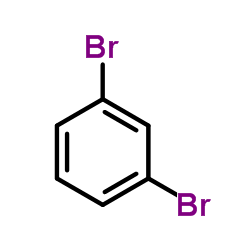Biochemical alterations as measures of acute and subacute hepatotoxicity of 1,3-dibromobenzene in rat.
J A Szymańska
Index: Arch. Toxicol. 71(1-2) , 99-106, (1996)
Full Text: HTML
Abstract
Rats were used to study acute and subacute hepatotoxicity of 1,3-dibromobenzene (1,3-dBB). In the single-exposure experiment, maximum hepatic 1,3-dBB concentrations were found to occur 1 to 12 h after the exposure, depending on the dose. Maximum concentrations of covalently bound adducts were reached after 12 h. Depletion of hepatic glutathione (GSH) content occurred during the first 24 h following the exposure, but was not accompanied by changes in alanine aminotransferase (ALT) activity. The increased number of doses also did not result in necrotic lesions of the liver. In the subacute (28-day) experiment, higher hepatic GSH levels and increased blood serum gamma-glutamyltransferase (gamma-GT) activity were observed. Exposure to 1,3-dBB resulted in increased porphyrin excretion in urine, without accompanying increase in the removal of delta-aminolevulinic acid (AlA-U). The results indicate that subacute exposure to 1,3-dBB produces porphyrinuria in the rat.
Related Compounds
| Structure | Name/CAS No. | Molecular Formula | Articles |
|---|---|---|---|
 |
1,3-Dibromobenzene
CAS:108-36-1 |
C6H4Br2 |
|
Hepatotoxicity of brominated benzenes: relationship between ...
1998-01-01 [Arch. Toxicol. 72(2) , 97-103, (1998)] |
|
Comparison of hepatotoxicity of 1,2-, 1,3- and 1,4-dibromobe...
1996-01-01 [J. Appl. Toxicol. 16(1) , 35-41, (1996)] |
|
Microwave-assisted Suzuki coupling on a KF-alumina surface: ...
[Tetrahedron Lett. 44(19) , 3817-20, (2003)] |
|
Synthesis of [n]- and [n.n]cyclophanes by using Suzuki-Miyau...
2002-07-26 [J. Org. Chem. 67(15) , 5333-7, (2002)] |
|
The disposition and metabolism of 1,3-dibromobenzene in the ...
1999-12-01 [Chemosphere 39(13) , 2229-38, (1999)] |